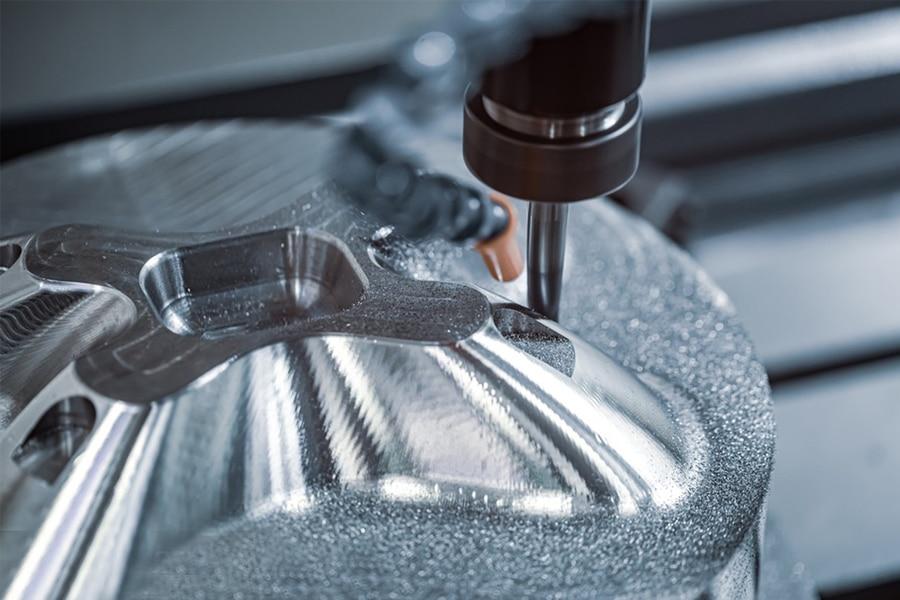Here are some general insights into sustainability practices in CNC machining operations in China. However, please note that specific practices and developments may have occurred since then. It’s important to verify the current state of affairs with up-to-date sources.
Sustainability practices in CNC machining operations in China can encompass various aspects aimed at minimizing environmental impact, conserving resources, and promoting responsible manufacturing. Here are some key areas and practices that were being considered or implemented:
- Energy Efficiency: CNC machines consume a significant amount of energy during operation. To improve sustainability, manufacturers may invest in energy-efficient machinery, use smart controls to optimize energy consumption, and implement power-saving measures.
- Waste Reduction and Recycling: CNC machining generates waste materials such as metal shavings, chips, and coolant. Implementing effective waste separation, recycling, and disposal processes can help reduce the environmental impact. Recycling metal chips, for example, can minimize raw material consumption.
- Coolant Management: Proper management of cutting fluids and coolants is essential for both worker safety and environmental impact. Recycling and treating coolant fluids can extend their lifespan and reduce the need for frequent replacements.
- Material Selection and Minimization: Using sustainable materials, such as recycled or eco-friendly metals, can contribute to reducing the overall environmental footprint. Additionally, optimizing the design and machining process to minimize material waste is important.
- Emissions Reduction: CNC machining processes can generate air emissions from cutting, cooling, and other operations. Implementing proper ventilation, exhaust, and air quality control systems can help minimize emissions and provide a healthier working environment.
- Lean Manufacturing: Adopting lean manufacturing principles can lead to more efficient production processes, reduced waste, and improved resource utilization. This includes practices such as just-in-time manufacturing and efficient production scheduling.
- Renewable Energy Adoption: Where feasible, CNC machining operations can transition to using renewable energy sources, such as solar or wind power, to reduce reliance on fossil fuels and decrease carbon emissions.
- Supply Chain Sustainability: Assessing and selecting suppliers based on their own sustainability practices can help promote a broader culture of sustainability within the CNC machining China
- Training and Awareness: Educating employees about sustainable practices and the importance of environmental stewardship can foster a culture of sustainability within the company.
- Regulatory Compliance: Adhering to local and national environmental regulations and standards is crucial for sustainable operations. Regular assessments and audits can help ensure compliance and identify areas for improvement.
China has been making efforts to promote environmental sustainability and reduce its carbon footprint in various industries, including manufacturing. The Chinese government has introduced policies and initiatives aimed at encouraging cleaner and more sustainable production practices.
For the most current and specific information regarding sustainability practices in CNC machining operations in China, I recommend consulting industry reports, government publications, and contacting relevant industry associations or experts who can provide up-to-date insights.
Ways to Save energy in CNC Machining
Saving energy in CNC machining operations is not only environmentally responsible but can also lead to cost savings for manufacturers. Here are some strategies you can implement to save energy in CNC machining:
- High-Efficiency Machines: Invest in modern CNC machines that are designed for energy efficiency. Newer machines often incorporate advanced technologies, such as variable-frequency drives (VFDs) and servo motors, that optimize energy usage during different machining processes.
- Tool Selection and Optimization: Choose the right cutting tools for each job to minimize energy consumption. Use high-quality tools that are designed for longevity and efficiency, and ensure they are properly sharpened and maintained. Additionally, optimize toolpaths to reduce unnecessary tool movements and improve machining efficiency.
- Material Selection and Minimization: Opt for materials that require less energy to machine. Also, design components to minimize material waste, reducing both machining time and energy consumption.
- Coolant Management: Proper coolant management not only improves tool life and machining quality but can also contribute to energy savings. Use coolant fluids efficiently and maintain them properly to prevent unnecessary consumption.
- Optimize Cutting Parameters: Adjust cutting parameters such as cutting speed, feed rate, and depth of cut to find the optimal balance between efficiency and tool life. Experiment with different settings to identify the most energy-efficient combination for each machining operation.
- Reduce Idle Time: Minimize machine idle time by optimizing tool changes, setup, and workpiece loading/unloading processes. Reducing idle time can lead to significant energy savings over time.
- Program Optimization: Optimize CNC programs to eliminate unnecessary movements, tool changes, and rapid traverses. Use CAM software to generate efficient toolpaths and avoid excessive movements that consume additional energy.
- Energy-Efficient Lighting: Use energy-efficient lighting in the machining area. LED lighting consumes less energy and generates less heat compared to traditional lighting options.
- Regular Maintenance: Perform regular maintenance on your CNC machines to ensure they are operating at peak efficiency. Clean and lubricate moving parts, replace worn components, and address any issues promptly.
- Energy Management Systems: Implement energy management systems that monitor and control energy usage in real time. These systems can help identify energy-intensive processes and provide insights for optimization.
- Off-Peak Energy Consumption: Whenever possible, schedule heavy machining tasks during off-peak energy demand periods. Energy costs might be lower during these times, resulting in cost savings.
- Employee Training: Train machine operators to follow energy-saving practices and to understand the impact of their actions on energy consumption. Encourage them to turn off machines and lights when not in use.
- Renewable Energy: Consider using renewable energy sources, such as solar or wind power, to supplement your energy needs for CNC machining.
Remember that the specifics of energy-saving strategies may vary based on your CNC machine types, processes, and shop setup. Regular monitoring and data analysis can help you identify areas where energy consumption can be reduced and contribute to a more sustainable and cost-effective CNC machining operation.

